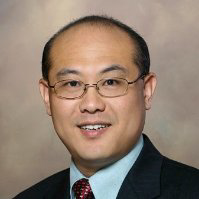Osram has signed a contract with the Wuxi New District Administrative Committee to build a new assembly plant in the Chinese province of Jiangsu. LED chips will be packaged in housings at the new backend facility starting in late 2013; with the Regensburg and Penang (frontend) plants exclusively continuing to make the actual LED chips.

"The new assembly plant will improve our access to the world's largest single market in the lighting industry," said Aldo Kamper, CEO of the Osram Opto Semiconductors business unit. Lixin Huang, of the Jiangsu Provincial CPC Committee added, "The plant in Wuxi will enhance the development of the LED industry in both Wuxi Municipality and Jiangsu Province."
In the face of sharply rising demand for LED-based products, Osram decided to set up a further plant in Wuxi, China, to augment the capacity of its chip plants in Regensburg, Germany and Penang, Malaysia. With this move, the company says it is strengthening its access to China – the lighting industry's largest single market worldwide. The new plant is scheduled to be up and running by the end of 2013. It will accommodate up to 1,600 employees when fully operational.
The new backend facility at Wuxi, near Shanghai, will install LED chips manufactured in the frontend plants at Regensburg and Penang in their housings. The new assembly plant in Wuxi will also augment the Penang plant by manufacturing general, automotive and industrial lighting products for key segments of the Chinese market.
The plant's added back-end LED capacity, will enable the company to capitalize on China's fast-growing market and support the two plants in Germany and Malaysia. Kamper added, "We have attained a leading position in the semiconductor [lighting] sector over the course of about 40 years. The facility in China marks another step forward in extending this lead."
Growth forecast
Market researchers at IMS Research have predicted strong growth for opto semiconductors such as LED components and laser diodes with average growth rates of around five percent worldwide in the coming years. The fastest growth is expected to come in China during the same period, with an average growth rate of ten percent.
This growth potential extends beyond components. And according to a market survey conducted by McKinsey, the rapidly growing Asian region today already accounts for around 35 percent of today's global general lighting market.
This share is expected to increase to 45 percent by 2020. Forecasts predict the Chinese market alone, worth over €8 billion today, to more than double by 2020. In fiscal 2011, Osram generated about one fifth of group revenue in the Asia-Pacific region, where the company employs over 16,000 people. This workforce is larger than that of any other region worldwide, and roughly half of it is employed in China. Osram has marketed products in the region for about 80 years, covering the entire value chain from front to back.

In April 2012, Osram announced that Samuel Wu would immediately be taking over the company's operations in the Asia-Pacific region. Wu replaced Fran Piscitelli who has retired from that position.
The company said that Wu, who was born in China, has "comprehensive international management expertise with a deep knowledge of clients and culture in China". After holding various managerial posts at General Electric, Wu most recently worked for the Honeywell Group where he was responsible for the Chinese business regarding industrial and process automation.
Osram Opto Semiconductors
OSRAM AG, based in Munich, Germany, is a wholly-owned subsidiary of Siemens AG and one of the two leading light manufacturers in the world. Its subsidiary, Osram Opto Semiconductors GmbH in Regensburg (Germany), offers its customers solutions based on semiconductor technology for lighting, sensor and visualization applications. Osram Opto Semiconductors has production sites in Regensburg (Germany) and Penang (Malaysia). Its headquarters for North America is in Sunnyvale (Ca., US), and for Asia in Hong Kong.





